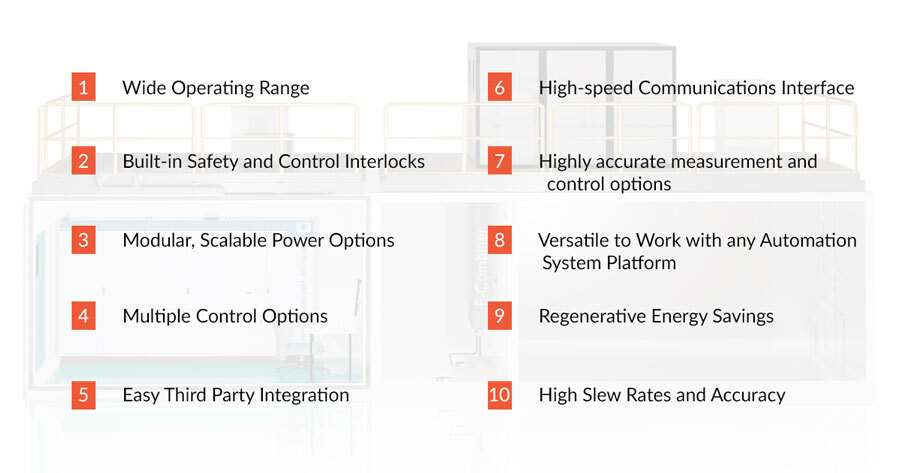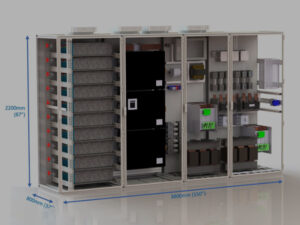With the continued global growth of electric vehicles, a new opportunity for the battery manufacturers is emerging: developing EV batteries that could exceed 200 gigawatt-hours by 2030.
Yet while fulfilling these targets, they also have to maintain very competitive cost-to-range ratios combined with improved energy density and potentially higher mileage.
To put this in perspective, battery manufacturers have to embrace bleeding-edge testing technologies for battery modules and packs.
“Battery technologies are accelerating as the new front line in sustainable energy development”
Importance of Battery Pack Testing
Lithium-ion batteries used in EV applications have a tough life, as they are designed for approximately a decade of use in most electric vehicles.
However, after the first five years of operation, they slowly degrade, subjected to extreme operating temperatures, hundreds of partial cycles per year, fast charging, and changing charge and discharge rates.
Therefore, it’s essential for today’s researchers, engineers, and manufacturers to understand the fundamentals of EV battery tests and the best approaches to ensure safety, product performance, and time to market.
Stages and Types of Battery Testing
Battery tests are performed at each phase of the product life-cycle, including R&D, manufacturing, and in-use, to evaluate the overall system design and optimize its performance.
Standard tests include drive-cycles, peak power capability, BMS software validation, and application-specific characterization tests.
The goal of testing batteries as an individual component or subsystem is to answer specific questions about the design or build. For example, how will the battery perform at different temperature levels? What will be the impact of mechanical vibrations on the battery packs? Or will unbalance in battery cell voltages during the charging and discharging process cause overheating?
These and various other scenarios are tested during the battery development process. Although testing batteries may seem like a simple task, there are many challenges due to their complexity and hazardous nature.
Modular and flexible drive solutions can provide solutions to overcome these pain points.
“Test stand drives with accurate application parameters can reduce operating costs, testing time and mitigate safety risks”
Battery Pack and Module Testing
Battery Module and Pack tests typically evaluate the battery performance, safety mechanisms, cooling systems, and internal heating characteristics.
Engineers and scientists also measure the state of charge (SoC), depth of discharge (DoD), direct current internal resistance (DCIR), and state of health (SoH) as part of the characterization and validation process.
Tests are also conducted to evaluate the electronic components and systems attached to the battery, such as the battery management systems (BMS), connected wires, sensors, and battery fuses.
Tests performed at Module Level
Module tests are performed to assess the quality and capacity of each cell integrated into the module. The process includes both charge and discharge tests to ensure the cell connections (in parallel or series) are secure and robust to manage the expected current loads without overheating, weakening, and failing.
Additionally, other tests like thermal abuse, mechanical vibration, high-voltage protection, and environmental tests are carried out at this level to ensure voltages are accurate and safe, temperature sensors function effectively, and cells are well balanced.
Tests performed at Pack Level
Pack level testing is sometimes also called End-of-Line Testing or Assembly Testing. It is mainly performed to ensure that each pack subsystem performs efficiently, including external hardware, safety mechanisms, and BMS Battery management system communications.
If the strings of modules within the pack show irregularities in the expected voltage, resistance or capacity range, it can be found here and rectified.
Engineers also check for any malfunction, temperature rise in the battery pack, current carrying capacity, cooling capacity, and overall mechanical structure.
After complete testing, packs may undergo extra testing to simulate the typical conditions and be integrated into the system or end-product.
Top 5 Fundamental Applications for Battery Module and Pack Testing include:
- Performance under Simulated Environment
- Aging Characteristics of the battery
- Charge/Discharge and Life Cycle Testing
- Capacity and Degradation Measurement
- Cooling System Efficiency Test
Efficient and Powerful Pack and Module Test Systems
Unico’s EV Battery cyclers helps to test your high voltage EV battery packs and modules.
This outstanding EV battery cycler is designed for high voltage electric vehicle testing procedures that include real-time simulation of battery charging and discharging.
It enables you to test the charge, discharge, and life cycle testing of EV battery packs and modules. With the help of this system, you can develop your next-generation EV battery packs and modules.
The Unico battery test system can be configured as both a battery emulator (or simulator) and a battery tester (or cycler).
When configured as an EV battery cycler, it is designed for battery cycling (charging and discharging) of packs and/or modules and can provide fast and accurate control of current, voltage, and power for all the battery testing needs.
Typical applications include periods of high current simulating high-performance driving, braking, and fast charging, pulse tests, and dynamic drive profiles.
These, along with traditional battery cycling profiles, provide the needed data for characterizing battery performance and degradation over the battery’s life, acquiring internal resistance data for battery emulation modes, and supporting your custom test programs.
Key Takeaways
Electric vehicle battery testing is critical for evaluating the battery’s condition and overall performance. It involves many challenges because it is complex, time-consuming, data intensive and hazardous.
As such battery manufacturers need to explore innovative test solutions for testing battery modules and packs. Things you should consider while choosing your next EV battery test equipment must include:

To learn more about this topic, you can contact our sales team, and the team would be happy to assist you.











